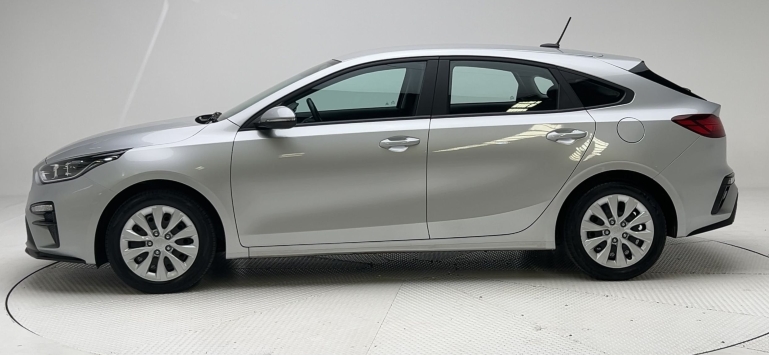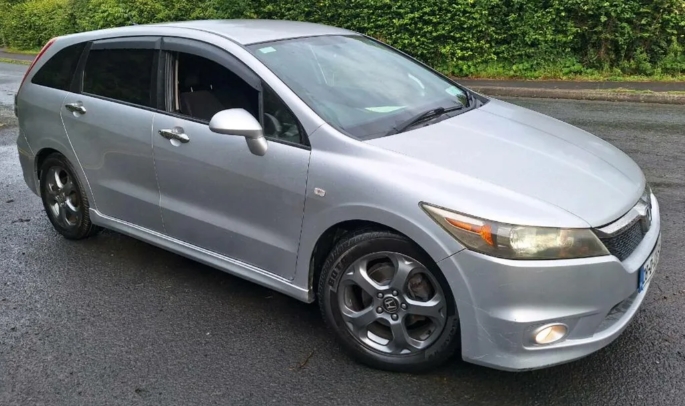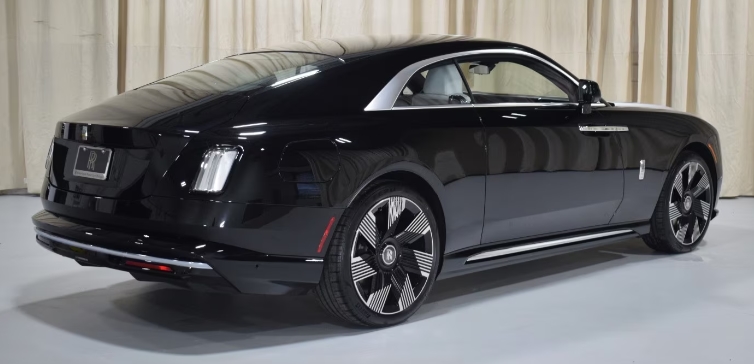From Humble Beginnings to Bold Statements: The Evolution of the Kia Cerato
The Kia Cerato, a nameplate that has graced driveways across the globe for over two decades, represents a significant chapter in Kia’s remarkable ascent from a budget-focused manufacturer to a respected global automotive player. Its journey is not merely a story of evolving design and technology, but a testament to Kia’s iterative improvement, responsiveness to market demands, and its unwavering commitment to delivering value. From its unassuming debut to its current sophisticated iterations, the Cerato has consistently aimed to provide a compelling package of practicality, affordability, and increasingly, style.
The Genesis: The First Generation (LD) – 2004-2008
The Cerato, known as the Spectra in some markets (particularly North America), first emerged in 2004 as Kia’s answer to the burgeoning compact sedan and hatchback segment. Its introduction aimed to provide a more refined and feature-rich alternative to the brand’s previous compact offerings, like the Sephia.
- Body Styles: The first generation was primarily offered as a four-door sedan and a five-door hatchback.
- Engine Options: Early models were typically powered by a 1.5-liter or 1.6-liter four-cylinder engine, with more potent 1.8-liter and 2.0-liter options available in certain markets, often featuring a 16-valve DOHC design.
- Trim Levels (General Overview): While specific trim names varied by region, the general hierarchy often included:
- Base/LX: The entry-level offering, focusing on essential features.
- EX/SX: Mid-range trims that introduced more comfort and convenience features like power windows, air conditioning, and upgraded audio systems.
- GT (Hatchback): A sportier variant on the hatchback, often featuring a more aggressive body kit, enhanced suspension, and sometimes a larger engine.
The first-generation Cerato, while functional and affordable, was often characterized by its somewhat generic styling and a driving experience that prioritized comfort over engagement. However, it laid the groundwork for future iterations, establishing a reputation for reliability and value for money.
.
THIS is GOOD stuff if your car is in need:

.
The Transformation: The Second Generation (TD) – 2009-2013
Recognizing the need for a more distinctive identity and improved driving dynamics, Kia launched the second-generation Cerato in 2009. This was a significant leap forward, showcasing a bolder design language and a more refined interior. The “Koup” moniker also made its debut, introducing a stylish two-door coupe variant.
- Body Styles: Sedan, five-door hatchback, and the new two-door Koup coupe.
- Engine Options: The engine lineup saw an upgrade, with 1.6-liter and 2.0-liter gasoline engines becoming more common. In some markets, a 2.4-liter engine was also offered in higher trims. The 2.0-liter “Theta II” engine, known for its improved performance and efficiency, was a notable inclusion during this generation.
- Trim Levels (General Overview): The trim strategy continued to offer differentiation:
- S / LX: Entry-level models.
- EX / SX: Mid-tier trims, adding features like alloy wheels, cruise control, and upgraded interior materials.
- SX-R / Premium: Higher trims often featured leather upholstery, heated seats, a sunroof, and advanced infotainment options.
- Koup Specific Trims: The Koup variants often came with sportier tuning, unique styling elements, and performance-oriented features.
The second generation Cerato, particularly the Koup, began to attract a younger demographic and garner critical acclaim for its design and perceived quality. The chassis was also improved, offering a more composed and engaging driving experience compared to its predecessor.
The Refinement: The Third Generation (YD) – 2014-2018
Kia continued its design offensive with the third generation, which debuted in 2014. This generation further honed the Cerato’s aesthetic appeal, offering a more premium feel and enhanced technology. The hatchback variant was re-introduced alongside the sedan.
- Body Styles: Sedan and five-door hatchback. The Koup was discontinued for this generation, with its sporty aspirations being partially absorbed by the Cee’d/Proceed in some markets and other Kia models.
- Engine Options: The engine range remained focused on efficiency and refinement. Common options included a 1.6-liter GDI (Gasoline Direct Injection) engine and a 2.0-liter MPI (Multi-Point Injection) or GDI engine. A turbocharged 1.6-liter T-GDI engine was introduced in performance-oriented trims.
- Trim Levels (General Overview): Kia solidified its trim nomenclature, with variations existing across different global markets:
- LX: The standard entry-level model.
- EX / S: Mid-level trims, often including features like a rearview camera, Bluetooth connectivity, and improved interior trim.
- SX / Premium: Higher-spec models, boasting features such as leather seats, heated and ventilated front seats, a panoramic sunroof, an upgraded infotainment system with navigation, and advanced driver-assistance systems (ADAS).
- GT-Line / GT: Sport-inspired trims that offered unique styling cues, sportier suspension tuning, and in the case of the full GT, a more powerful engine and performance enhancements.
The third generation Cerato, often referred to as the Forte sedan in North America, was praised for its sharp styling, well-appointed interior, and a more engaging driving experience. It continued to be a strong contender in its segment, offering a compelling blend of value and sophistication.
The Boldness: The Fourth Generation (BD) – 2019-Present
The current, fourth generation Cerato, launched in 2019, represents Kia’s most ambitious take on the compact segment yet. It embodies the brand’s “Tiger Nose” grille evolution into a more aggressive and integrated design, coupled with contemporary technology and a focus on driver assistance.
- Body Styles: Sedan and a distinctive five-door hatchback (often marketed as the “Proceed” in Europe, showcasing a sleeker, shooting brake-inspired design in its higher trims).
- Engine Options: The engine lineup emphasizes efficiency and performance. Typical offerings include:
- A naturally aspirated 1.6-liter Smartstream engine.
- A 2.0-liter Smartstream GDI engine.
- A potent 1.6-liter T-GDI engine for the performance-oriented GT models.
- In some markets, diesel engine options were also available.
- Trim Levels (General Overview): The trim structure has become more layered and feature-rich:
- S / LX: The foundational trims, providing essential modern amenities.
- EX / Sport / SE: Mid-range trims, adding significant upgrades like larger alloy wheels, enhanced infotainment screens, LED lighting, and often a suite of basic ADAS features.
- GT-Line / GT-Plus: These trims offer a sportier aesthetic with unique body kits, sport seats, and advanced features.
- GT (Performance Model): This is the flagship of the Cerato range, featuring the more powerful 1.6 T-GDI engine, a sport-tuned suspension, upgraded brakes, distinctive styling, and a comprehensive list of premium features.
- Proceed (European Market – Higher Trims): Specific to the European market, the Proceed has its own distinct trim hierarchy, with “GT-Line” and the flagship “GT” (shooting brake) offering a more premium and performance-oriented experience.
The fourth-generation Cerato has been widely lauded for its striking design, sophisticated interior, comprehensive safety features, and enjoyable driving dynamics, especially in its GT guise. It has firmly established Kia as a formidable competitor in the compact segment, proving that affordability doesn’t have to come at the expense of style, technology, or driving pleasure.
The Cerato’s Enduring Legacy:
Throughout its evolution, the Kia Cerato has consistently delivered on its core promise of providing an accessible and practical mode of transportation. However, its journey has been far more than just incremental improvements. Each generation has witnessed a significant leap in design, technology, and driving refinement, mirroring Kia’s overall brand transformation.
From the relatively uninspired lines of the first generation to the bold and sophisticated styling of the current model, the Cerato has successfully shed its budget image and embraced a more aspirational identity. It has also kept pace with the ever-increasing demands for in-car technology and safety, consistently offering a generous list of features, often at a more competitive price point than its rivals.
The Cerato’s narrative is a compelling one: a story of a car that started with humble ambitions and, through consistent evolution and a commitment to listening to consumer needs, has blossomed into a highly desirable and well-rounded vehicle. It stands as a testament to the power of iterative development and Kia’s remarkable journey from a value-focused brand to a global automotive powerhouse, with the Cerato playing a vital and evolving role in that success story.







